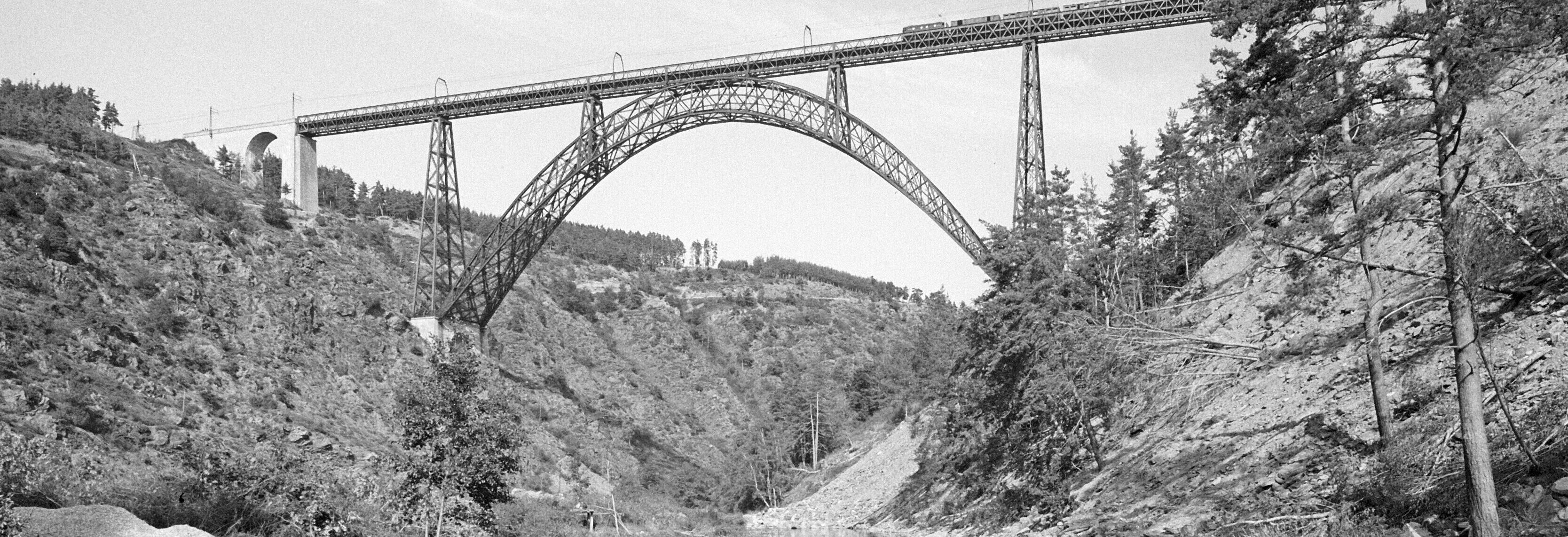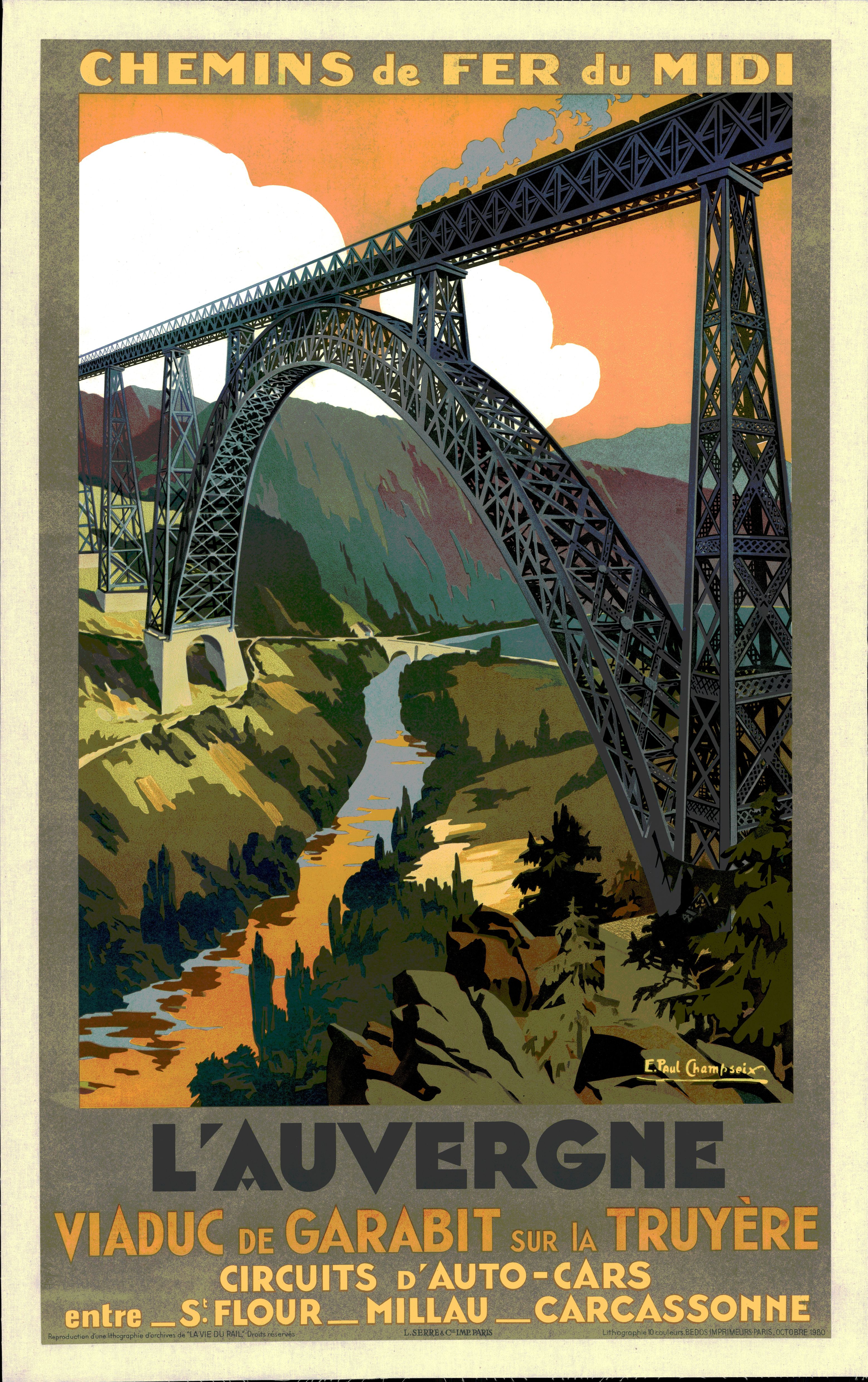The unique features of the Garabit Viaduct include
The civil engineer Léon Boyer, responsible for the study of establishing a railway line connecting the stations of Marvejols and Béziers through Neussargues, across the mountainous region of the Massif Central, faced a significant challenge: the need to cross the Truyère River.
It was the heyday of metal construction, which provided increased strength and lightness. Léon Boyer thus advocated for his idea: to cross the Truyère valley as high as possible using a metal viaduct. Beforehand, he took care to contact the Gustave Eiffel Company to inquire about the feasibility of using an arch. He then entrusted them with the construction and implementation.
The Garabit Viaduct rests on five piers, with the tallest one measuring 89.64 meters. The central arch is a parabolic arc with a span of 56.86 meters and a chord length of 165 meters. These substantial dimensions make this structure the largest one ever built in France at the time (3,254 tons).
The enemy is rust, so it’s necessary to protect these metal structures by applying a layer of paint that makes the metal impermeable to moisture. The chosen color, primarily matte red, stands out from the usual gray and adds an original touch.


